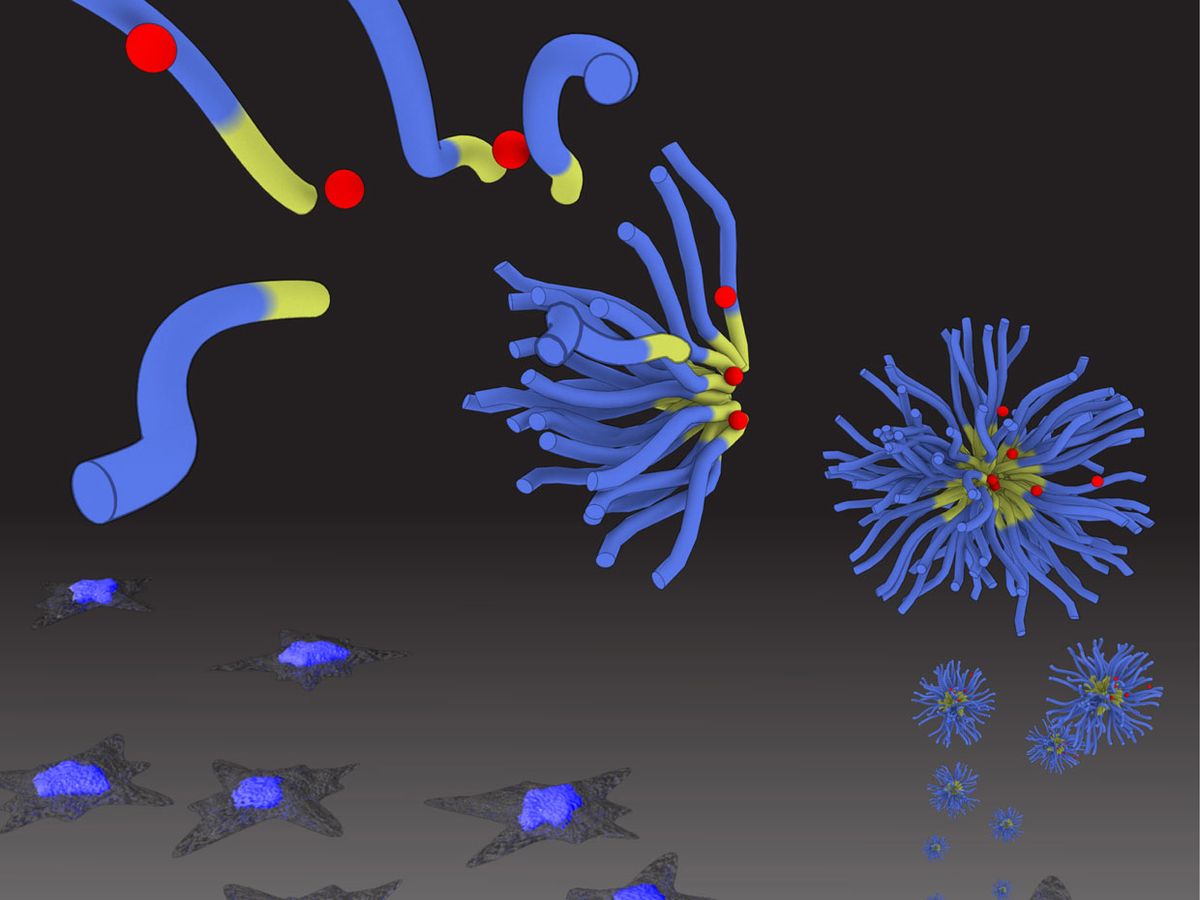The precise delivery of drugs to diseased cells is one of the key functions of nanoparticles in the treatment of cancer and other diseases. Another role for nanoparticles in medical treatment is to provide early diagnosis of diseases like cancer through the detection of biomarkers that are linked to the disease.
The ability to combine both these therapeutic and diagnostic functions into one nanoparticle has developed into a field known as a “theranostics.”
Now a research team in Sweden, including Eva Malmström-Jonsson of the KTH Royal Institute of Technology and Andreas Nyström of the Karolinska Institute, has not only developed just such a theranostic nanoparticle, but also demonstrated that it is non-toxic and biodegradable.
The self-assembly process required a balance between the particles’ hydrophilic (capable of dissolving in water) and hydrophobic (not dissolvable in water) parts. While the hydrophobic part of the particle was needed to carry the drug to the target site, the hydrophilic portion was needed to make sure the drug was actually released.
Another quality of the polymer-based nanoparticle was that it contained the natural isotope 19F (fluorine), which comes up clearly in magnetic resonance imaging (MRI). So, conceivably, in a clinical setting the drug-delivering nanoparticles could be ingested by a patient and then be traced in an MRI as they approach their target.
In the in vitro evaluation performed by the researchers, the cancer-treatment drug doxorubicin was loaded into the nanoparticles. In these tests, the nanoparticles were observed to kill cancer cells but were not toxic to any other cells.
“What we want to do is try to give nanoparticles a homing function on the surface so that the drug is as effective as possible and can be transported to the right place,” Malmström-Jonsson says in a press release.
The team's next step will be to test the nanoparticles in delivering chemotherapy drugs to hard-to-treat tumors such as brain tumors, pancreatic cancer, and drug-resistant breast cancer tumors.
“By targeting groups on the surface, or by changing the size or introducing ionic groups on our nanoparticles, one can increase the selective uptake in these tumors,” says Nyström in the press release.
Nyström, who is also the CEO of Polymer Factory Sweden—an industrial partner in the research—explained to me that in the long-term theranostic drug delivery systems could usher in a new age in medicine. “In the future, theranostic drug delivery systems can be a tool for personalized medicine,” he says. “The concurrent delivery and readout of efficacy or localization can be used to tailor treatment regimens for specific patient groups or individuals.”
Image: KTH
Dexter Johnson is a contributing editor at IEEE Spectrum, with a focus on nanotechnology.




